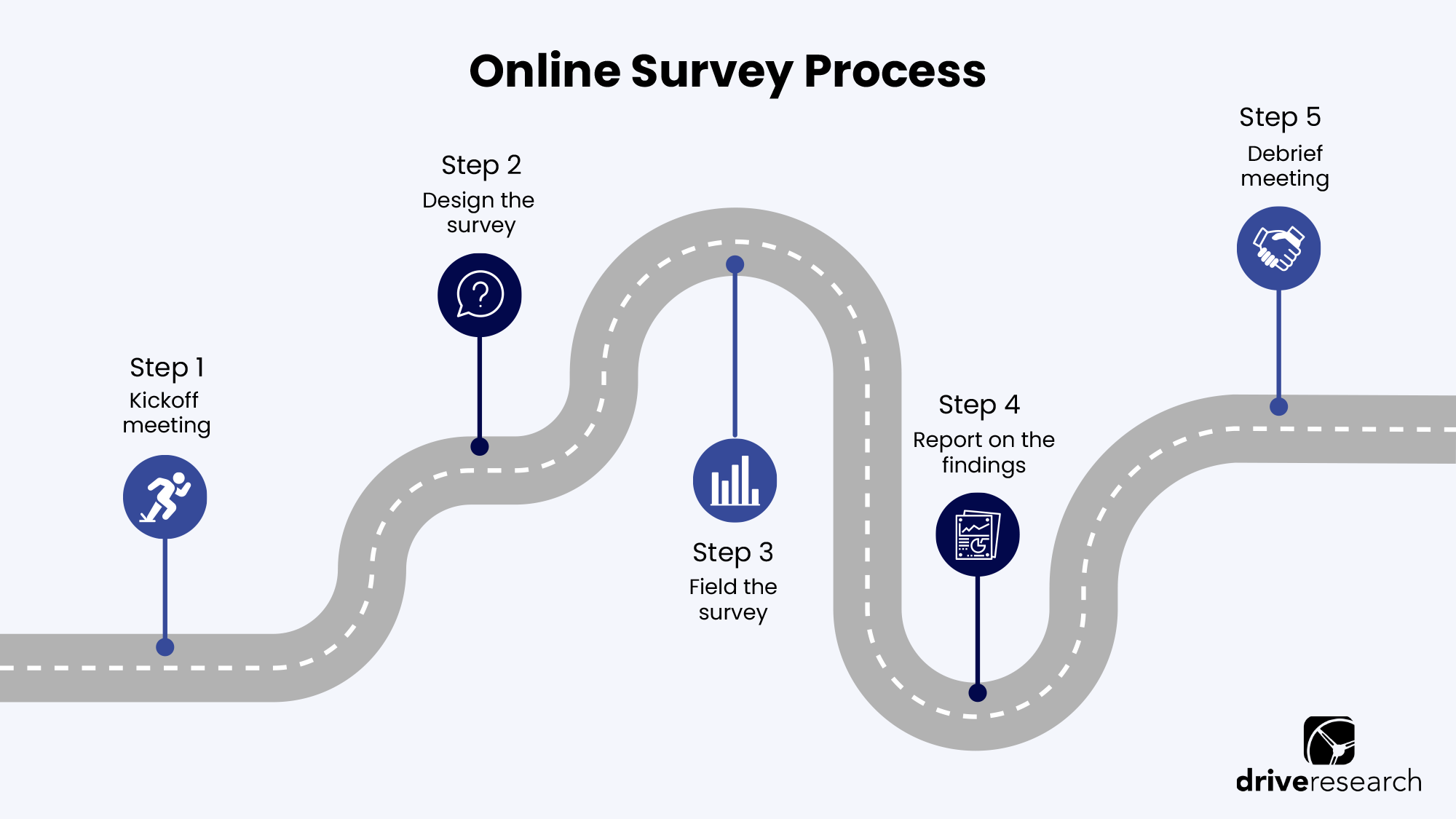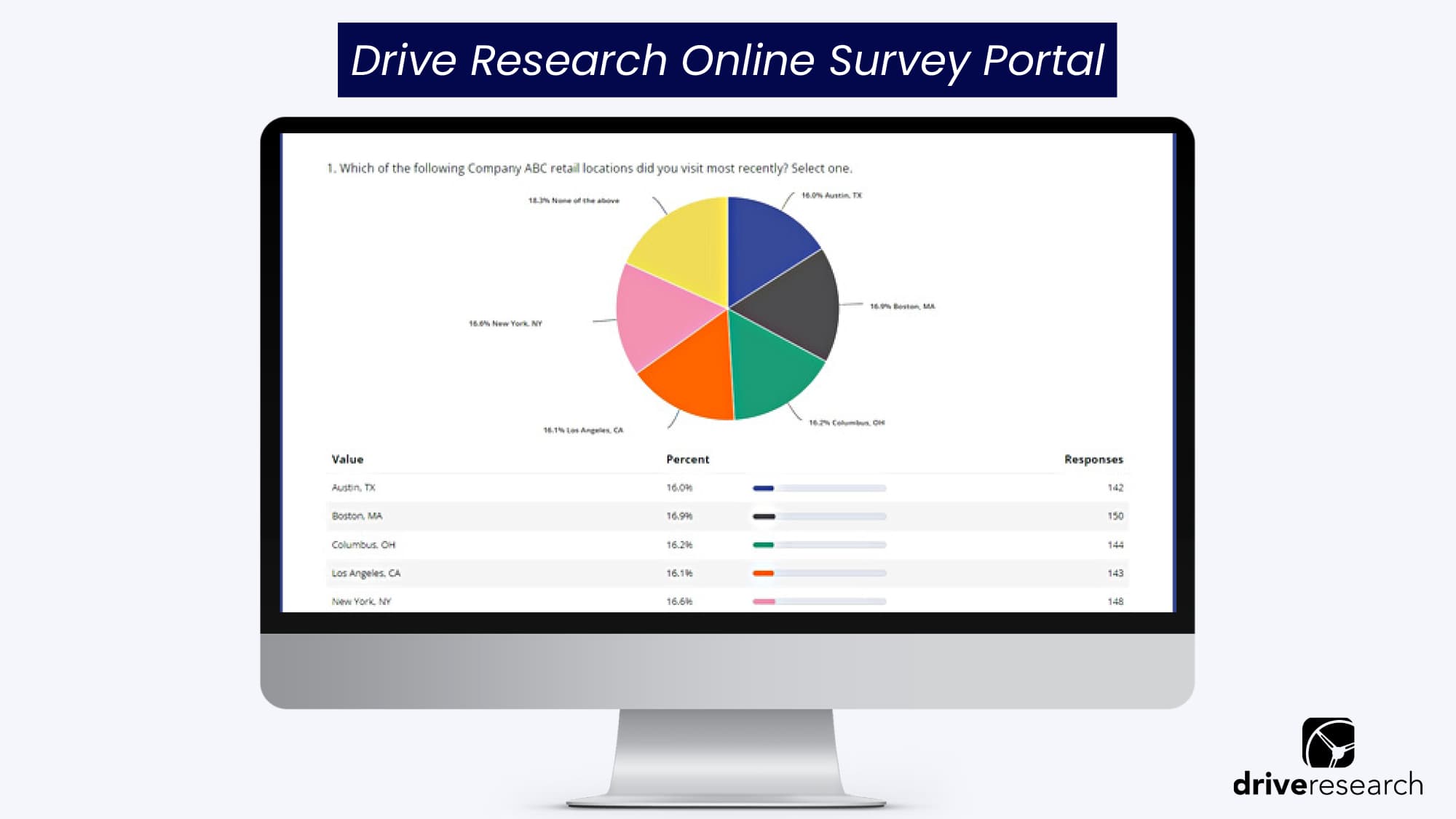
In the dynamic landscape of education, it is important to understand and enhance the student experience.
Many schools and institutions accomplish this through student perception surveys.
School leaders and decision-makers view student surveys as a versatile tool designed to unravel the intricate layers of student engagement, preferences, and satisfaction.
Learn more about student perception surveys, why they are important, a step-by-step guide on how to conduct student perception research, and example questions our higher education market research company recommends including.
What is a Student Perception Survey?
A student perception survey gathers relevant information regarding the student experience, preferences, satisfaction, engagement, and more.
Student survey topics can be customized to meet the unique goals/needs of the school district and teachers. For example, additional survey questions related to teachers, curriculum, amenities, hobbies/interests, and more.
From our experience, we recommend keeping the respondent experience top of mind when creating a student perception survey. Consider ways to make the survey quick and intuitive to complete.
For example, a typical student perception survey should include approximately 15 to 30 questions and take less than 5 minutes to complete. Invites can be sent via email or text and should consider the best, or most intuitive, way to reach students.
💡 The Key Takeaway: A student perception survey is a quantitative research method used to gather metrics related to the student experience.
The Importance of Measuring Student Perception
Measuring student perception is a valuable tool for promoting continuous improvement in education.
It fosters a student-centered approach, aligns educational practices with student needs, and contributes to the overall enhancement of the learning environment.
A few goals of measuring student perception may include:
- Increasing the quality of each student’s educational experience. Consider including questions that measure the perception of the school, curriculum, teachers, and more. Gathering data on these topics helps school districts make informed decisions on how to improve and tailor each student’s educational experience. Doing so helps to improve student attrition and graduation rates.
- Increased student engagement. Safe to say having more engaged students will heighten experiences and satisfaction. Measuring engagement in student surveys is easy. The data can provide insight into the types of students who are more engaged than others and identify sources to make engagement improvements.
- Identifying core competencies and areas of improvement. Measuring the importance and satisfaction of various factors (i.e., professors, curriculum, extracurriculars, amenities) will allow an education market research company to identify core competencies and areas of improvement. Core competencies are areas of high importance and satisfaction, while areas of improvement have high importance and low satisfaction.
- Enhanced decision-making. Before sending a student experience survey out, think about other topics that are of interest to decision-makers. The results of these surveys can help to position and measure interest in future school initiatives.
💡 The Key Takeaway: Remember, the best student perception survey is custom! The goals of conducting student surveys will vary based on the unique needs of the school district.
How to Measure Student Perception with Surveys
Below is an overview of the six steps to conducting student perception surveys. It is the process our market research company follows when conducting surveys with students, teachers, parents, and other audiences.

Step 1. Kickoff Meeting
Student survey kickoff meetings typically include the core research and client teams. We typically suggests limiting this meeting to only the true decision-makers involved to help streamline goals/objectives.
These meetings typically last for approximately 60 minutes and discuss core details like goals/objectives, how the results will be used, and details regarding the survey scope.
Step 2. Survey drafting
After the kickoff is held, the market research team will begin drafting the student survey.
We will use the information discussed at the kickoff meeting to guide the survey questions. This process can include as many iterations as needed to perfect the survey.
Step 3. Programming
The research team will begin programming the survey once the student perception survey questions are deemed final. In our experience, this process typically takes 2 to 3 days depending on the survey length.
Step 4. Fieldwork
The next step in the process is to send the survey out to students. Fieldwork for student surveys typically lasts between 2 to 3 weeks, but this timing can be customized to the needs of each school.
Step 5. Analysis and reporting
When fieldwork is completed the research team will begin analyzing and reporting on the data collected. Deliverables for a student perception survey may include a raw data file, online survey portals, and a comprehensive report.
Here is an interactive link to view what your online survey portal could look like. As the student perception survey is in the field, this report will update in real time as new responses come in.

Step 6. Debrief
After the report is complete a meeting is held between the research and client teams. During this meeting, the researchers will walk through the results and answer any questions.
💡 The Key Takeaway: Working with an education market research company makes measuring student perceptions with surveys easy. Learn more about the online survey process with this blog post.
Example Student Perception Survey Questions
Here are a few examples of student perception survey questions:
- What word(s) come to mind first when you think of [insert school]?
- Based on your knowledge, what is your perception of [insert school]?
- How likely would you be to recommend [insert school] to a friend?
- Please explain why you rated [insert school] as a [insert response] out of 10.
- What is most important when choosing a school to attend?
- How do you learn information about school-related opportunities that interest you?
- How satisfied are you with each of the following at [insert school]?
- List specific teachers
- List specific school leaders
- Curriculum
- List specific courses
- List specific amenities
- List specific extracurricular activities
While these questions are just an example, they show how student survey questions can gather meaningful information to make decisions.
Final Thoughts
Student perception survey questions are strategically crafted to extract meaningful information on students' perceptions of their school, teachers, curriculum, and overall educational experience.
When conducted appropriately, student experience research underscores the versatility and depth that well-designed survey questions can do to inform decision-making.
Contact Our Education Market Research Company
Leverage our education market research expertise to make data-driven decisions, enhance student satisfaction and perception, and ultimately improve your competitive position in the ever-evolving landscape of higher education.
Drive Research offers a full suite of market research services such as online surveys, focus groups, in-depth interviews, phone surveys, and more.
Contact our education market research company today to get a quote.
- Message us on our website
- Email us at [email protected]
- Call us at 888-725-DATA
- Text us at 315-303-2040

Emily Taylor
As a Research Manager, Emily is approaching a decade of experience in the market research industry and loves to challenge the status quo. She is a certified VoC professional with a passion for storytelling.
Learn more about Emily, here.

